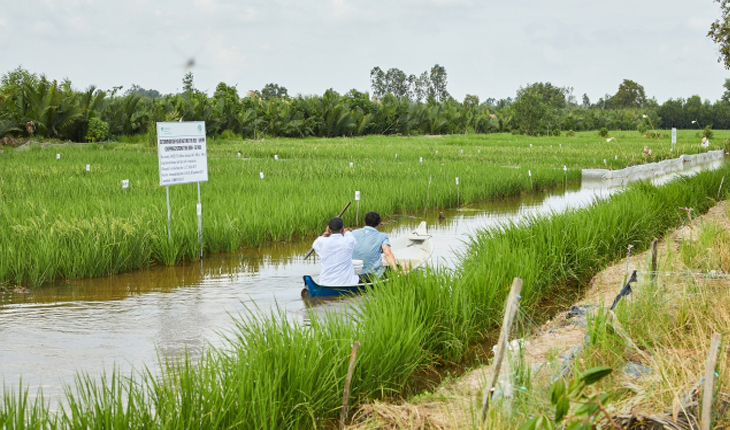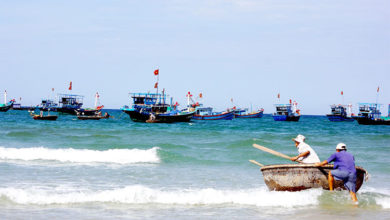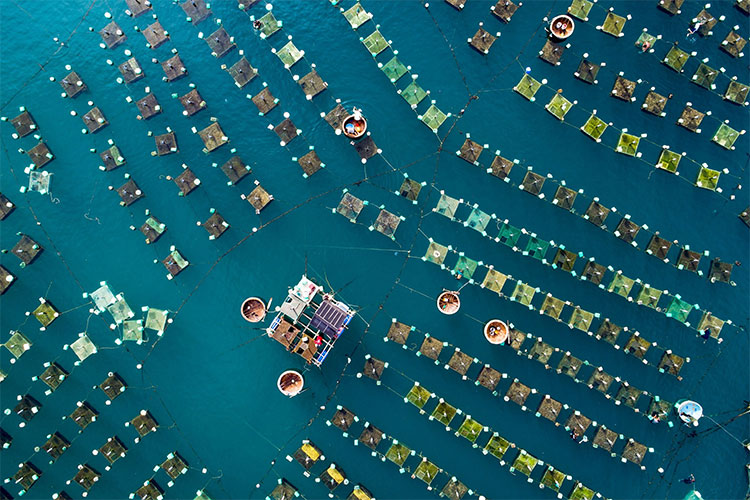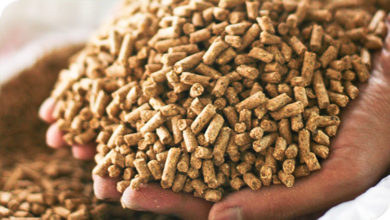Challenges for marine aquaculture
Vietnam has many advantages for the development of marine aquaculture. However, potential for this industry has not been fully realized due to fragmented, small-scale production. Therefore, collaboration is needed to advance marine aquaculture.
This information was presented during an online seminar on the topic “Development of marine aquaculture: Opportunities and Challenges,” organized by the National Agricultural Promotion Center in Hanoi in August 2023.
Advantages with challenges
Discussing Vietnam’s marine aquaculture potential, Trần Công Khôi, Head of the Department of Breeding and Aquatic Feed at the Directorate of Fisheries, stated: “Vietnam has 3,260 km of coastline and 1 million square kilometers of sea area, with 500,000 ha of water surface, suitable for marine aquaculture.”
Vietnam has many regions suitable for marine aquaculture, divided into four main areas: the Northern region, the Central Coastal region, the Southeast region, and the Southwest region. The range of species for aquaculture is also diverse, including various types of fish, mollusks (clams, oysters, mussels), crustaceans (lobsters), and seaweed.
However, the majority of marine aquaculture is constructed by fragmented and small-scale production, inadequate breeding stock and feed, and outdated technology of caged farming. Meanwhile, Vietnam’s exported seafood is being imposed a “yellow card” by the European Commission for illegal, unreported, and unregulated (IUU) fishing. Efforts to remove the IUU “yellow card” have been ongoing for nearly six years without success. Therefore, Vietnam needs to reduce catching and increase aquaculture, which is also a strategic plan.
Boost aquaculture
Discussing solutions to sustainable aquaculture, Trần Công Khôi emphasized: “Aquaculture regulations were included in the 2017 Fisheries Law. Relevant authorities are continuing to amend Decree 26 on sea-based aquaculture permits. Concerning the transition of occupations, the Government has also issued Decision no.339 on the seafood strategy from 2030 to 2045. The Prime Minister has approved Decision no.1664 on the development of sea-based aquaculture, as well as Decision 208 on shifting environmentally harmful sea-based occupations to others.”
Currently, Vietnam has highly effective marine aquaculture models, such as seaweed farming in Phú Yên, Bình Định, Cà Mau, Kiên Giang. These models are managed cooperatively, simultaneously overseeing nearshore fishing and transitioning occupations for fishermen, reducing nearshore exploitation activities.
Particularly, the development of tourism combined with marine aquaculture is bringing economic benefits to local communities. Trần Công Khôi hopes that Vietnam will have “sea-based aquaculture cities” where farming cages form cities on the sea, making them attractive destinations. To achieve this, provinces need to develop strategies for harmonizing tourism and marine aquaculture.
According to Đặng Xuân Trường, Head of Promotion in Fisheries under the National Agricultural Promotion Center, promotion models will aim to establish cooperation with cooperatives to form integrated aquaculture and tourism chains, as seen in Vân Phong in Khánh Hòa and Phất Cờ in Quảng Ninh.
Additionally, it is essential to address the market for marine aquaculture products and environmental protection in aquaculture regions. Notably, entities seeking sea-based aquaculture permits must provide environmental impact assessments.
The National Agricultural Promotion Center will prioritize the development of production models, work out capital solutions, and send officers to support fishermen together with cooperatives.
VFM






